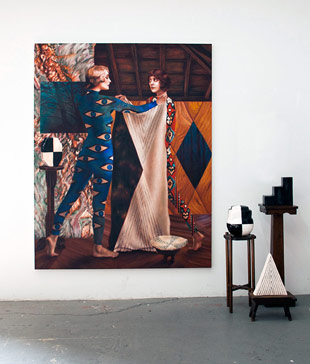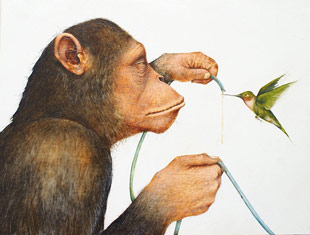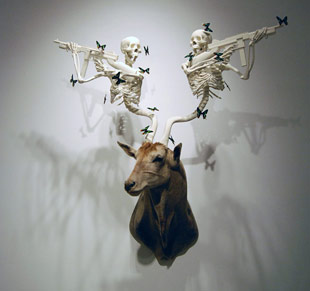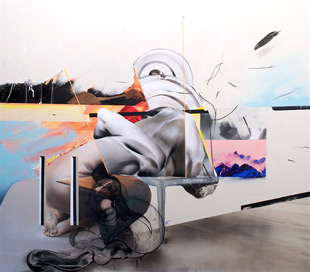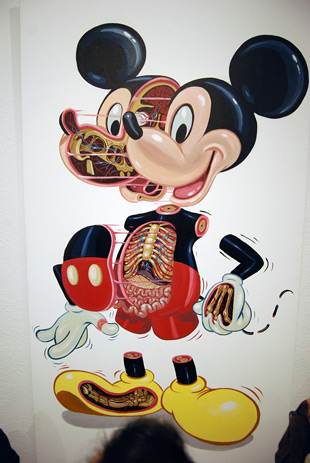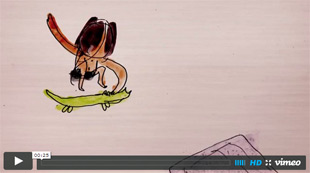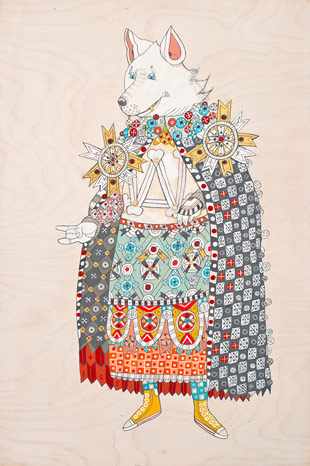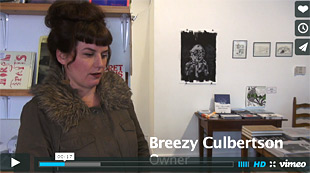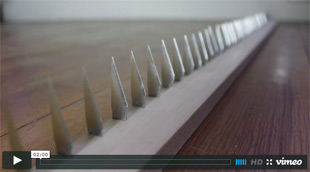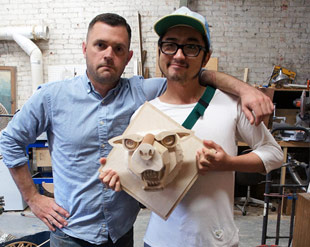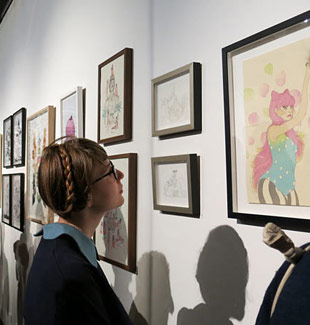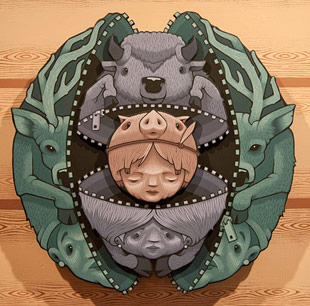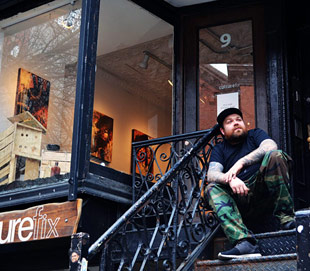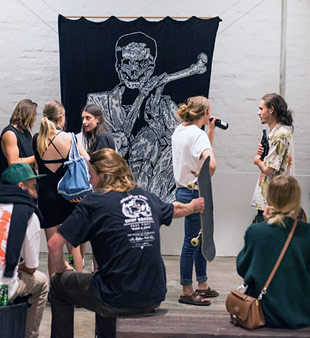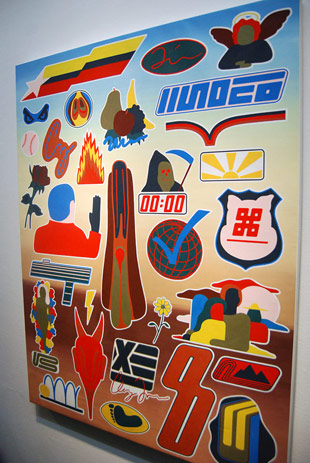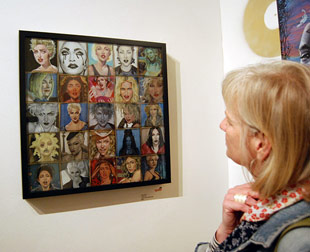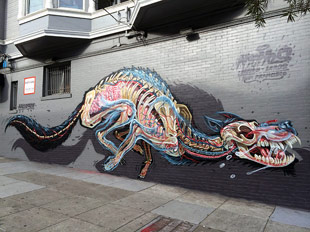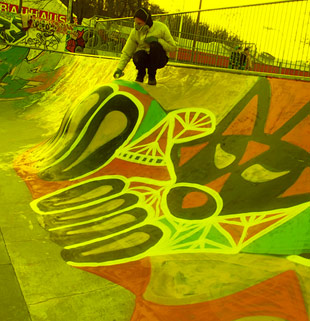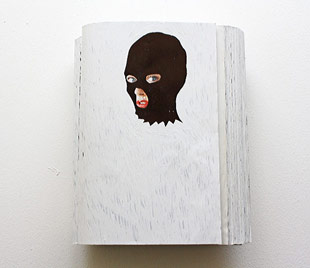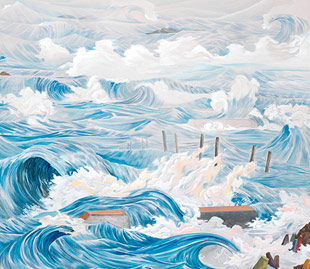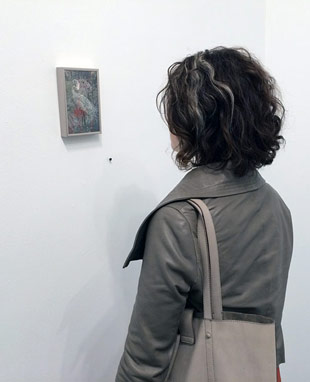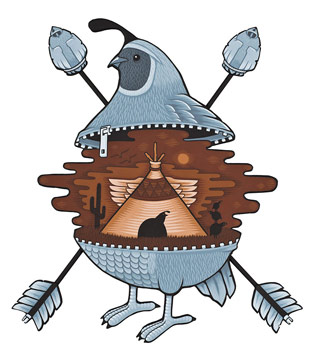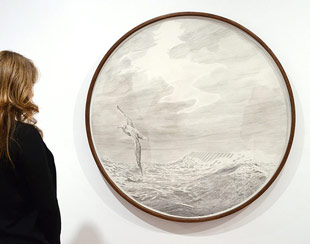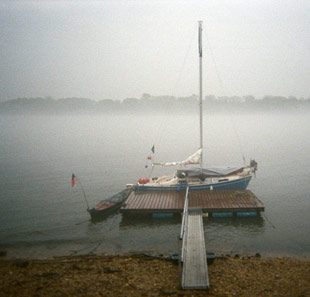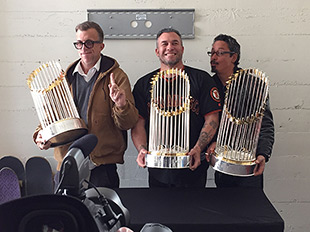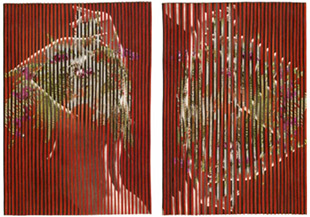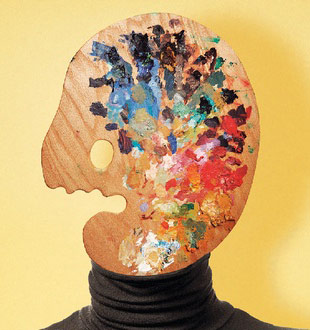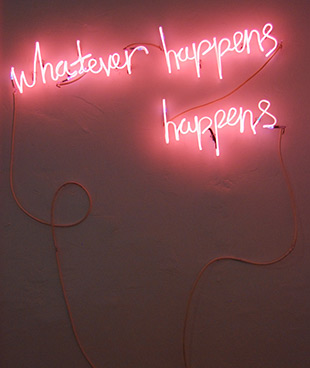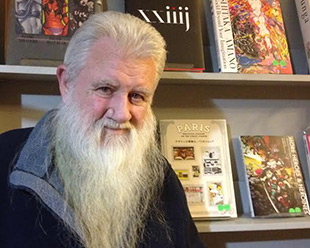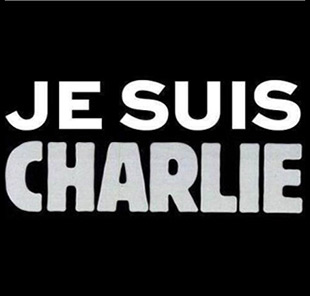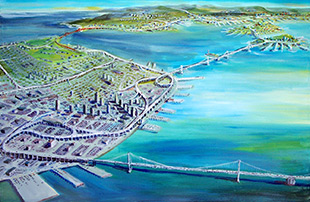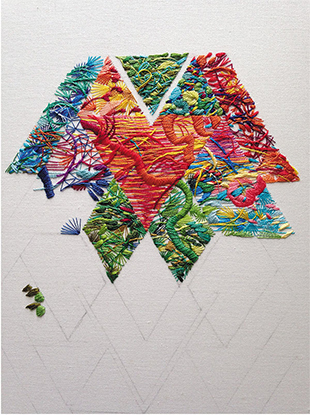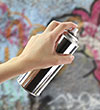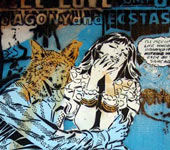 Manuel Bello sits down with infamous art collective know as Faile just before the drop of their super covert New York City show Thursday, June 7th. Stay tuned for details..
Manuel Bello sits down with infamous art collective know as Faile just before the drop of their super covert New York City show Thursday, June 7th. Stay tuned for details..When I arrived to New York City in 2001, I randomly began to spot stickers, wheat pastes and stencil throw ups labeled Faile. Sometimes with a cute little bunny boy, vicious dog or the always intriguing damsel in distress. Often times these images were plastered one on top of another provoking thoughts of layered dualism. After seeing a few I seemed to never miss them (they were everywhere) and I began wondering more and more who or what is this "Faile". Then a couple years back, I began to hear the name Faile tossed around with the likes of Banksy, Bast, and WK, just to name a few. Nowadays, there are enough street artist to fill the state of Delaware, but back at the turn of the century you could count theme with your fingers. Faile was among them and have not slowed down since. So now ladies and gentleman we are proud to present, Faile. -Manuel Bello
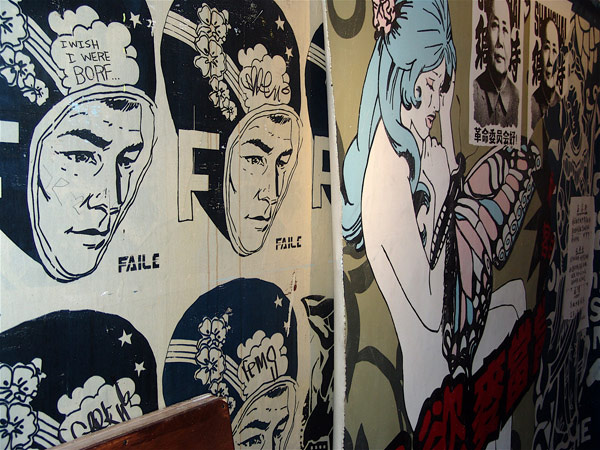
Patrick McNeil: Faile began as "Alife." This name came from an old sketchbook piece where a man was walking out an airplane door and above it Patrick had written the word "Alife." We chose this name because we really felt like it represented what we were doing at the time. We were starting something new, something that had a beginning. Our first project together working under this name or idea of Alife, was a printed set of female nudes. We loved the idea of working with such an iconic form of beauty and fertility. Alife seemed the perfect fit. And further than that, the idea of the placement of the nudes within the street scape, where the work really has a life and an organic nature to it gave the idea of Alife a further meaning. After a month or so of putting the work up we realized there was a store in the Lower East Side that was using this name. We knew we had to change the name. One night while putting work up, we were arrested. Given some time to ponder our dilemma, Faile was born. By rearranging the letters we found Faile. We really liked the idea of it, that you could Faile to succeed. That there was this growth process where you could create the most from what you were given and move forward from there.
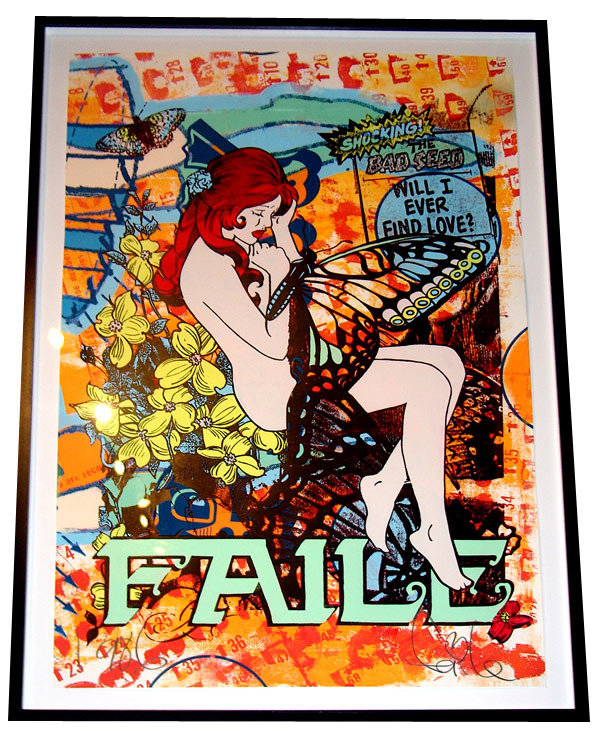
Patrick McNeil: Well, the initial collaboration came about from Pat and I knowing each other in high school. We met when we were 14, back in art class. We would just trade sketch books and work on stuff together and stayed that way through college just by keeping in contact. Then I met our former partner, Aiko, from working at a club in the meat packing district, here in New York. She was doing a lot of the visuals at the time and I was working on club flyers, she was really fun and I liked hanging out with her, so we would walk the streets together taking photographs and checking out shit. Then we all got together and decided to do something together. Everything really fit together at that time. So we all collectively got it going together.
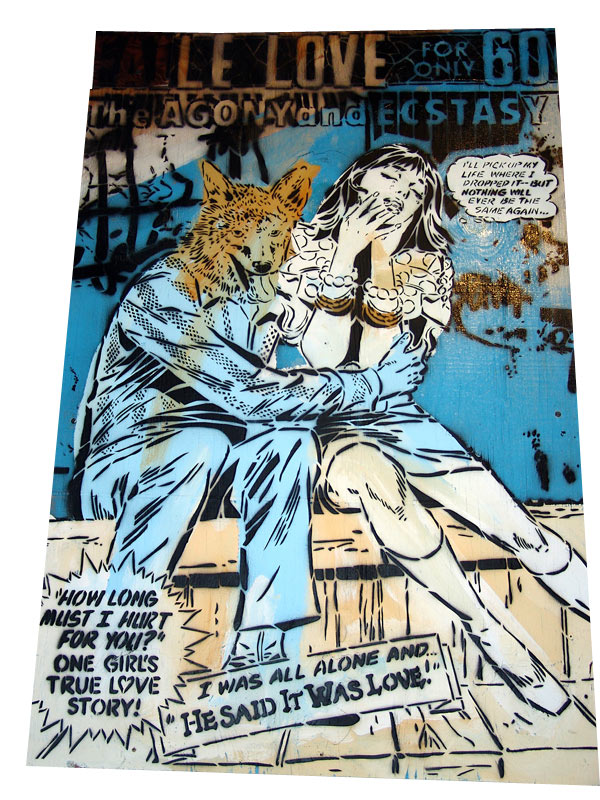
Patrick McNeil: Well the stencils were always there. That was really the stuff we started putting up originally, but the paper became the main art form because of the access to a print room. We could make tons of posters. We saw a lot of what was going on with Shepard, WK, and Bast in the late 90's and we were studying graphic design and printmaking at the time. We were using stencils but our main thing was silk screening. We were heavy into technique and printmaking so for us it was a lot easier to turn out a shit load of prints as opposed to stencils. The paper really took off and we were also mixing paint in there sometimes. I remember this guy tagged over one of our pieces "Paper vs. Paint". I remember thinking how lame this was at the time, as it was a reference to graffiti vs. street art. So I decided to start stenciling a shit load everywhere and even things out a bit. The other side of this was, sometimes we would go on really long trips and could not really bring screens and shit and we would run out of paper, so we began cutting more stencils. We just figured out that we could travel with stencils a lot easier than with a bunch of posters. Also realizing that we could also carry our factory along with us, doing pieces on wood and paint and do the shit we wanted and still be mobile. So that was our alternative printmaking set-up that we came up with for the street and stenciling. We just kinda put it all together.
Patrick McNeil: Yeah, things have changed a lot. The original collaboration was Patrick, myself and Aiko. Aiko was a huge part of our work culturally. One being a female and two being from Japan. She definitely brought something unique to the table. But Aiko has not really been much in the picture for the last year and a half or so. But with Patrick, I get a lot of his Minnesota culture and he get a lot of my Canadian.
Patrick Miller: (Laughs) I also think that Pat and I have known each other for so long that I know his style really well and he knows how I work really well. Aiko always would come up with things that were really weird, it took some time to appreciate but was always great. I think that we've learned a lot about cultures from traveling and spending time in other countries. We collect a lot of things on these trips and when bring them back and start putting things together you see a lot of things that influenced you without maybe being so aware of it. This seems to keep it moving forward and helps make us more aware of things that are special in our own cultures here in New York City.
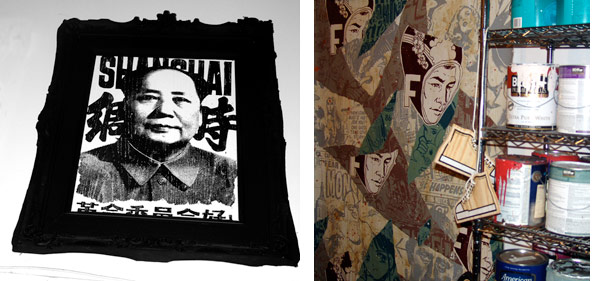
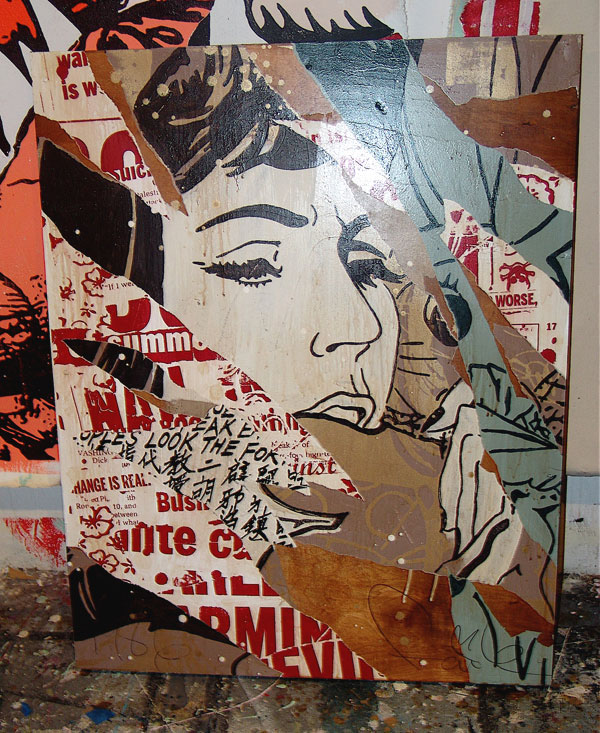
Patrick McNeil: Everybody really. I mean I could go through the names of artists, but honestly I think it just comes from everywhere.
Patrick Miller: I think we are always looking, grabbing this and that, seeing if it fits and moving on.
Patrick Miller: Oh, absolutely, that is 100% true. But also like Patrick was saying there are Influences from a lot of different artists. But I think we get our influences even more so with what we are dealing with on a day to day level. Especially living and working in New York, everything that you are being bombarded with daily, whether it be visually or mentally I think all those things influence the work too.
Patrick McNeil: That is an hour long discussion... It all comes from different things. We were talking about this the other day. I think it is all part of the same tree but graffiti is one thing and street art is another. You have your super hardcore graffiti people who are like "fuck street art, it's bullshit". Then you have the other graffiti artists who do a little of both graf and street art. I think the main difference is that graffiti is more of an insider culture. It's coded and there is some shit out there that nobody can read unless you are in the culture. If you are not, you are not going to know what the shit says, its going to look like another language. There are different styles, techniques, there's crews, there is a culture to the movement. With street art it is much more open to the masses. With street art there is usually something that everybody can grab on to. There is a versatility to it that isn't there with graffiti.
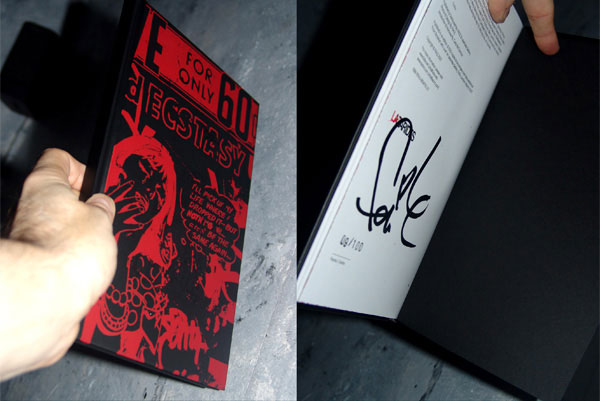
Patrick Miller: I think it's all how you look at it. I think that the commercial side of it and the art side of it is happening in different ways. It's clear that on both ends it is growing and it's obviously been commodified and used as a marketing tool for a lot of companies. But then you look as it being taken seriously as a legitimate art-form. It's almost in some ways not even an art-form as much as a vehicle. Street art can be anything, all it means is it's placed on the street, for direct public interaction. I think it will be really interesting to see which artists emerge out of the movement after ten years or so. To see its long-term impact on marketing and to see it's impact on the established world or art.
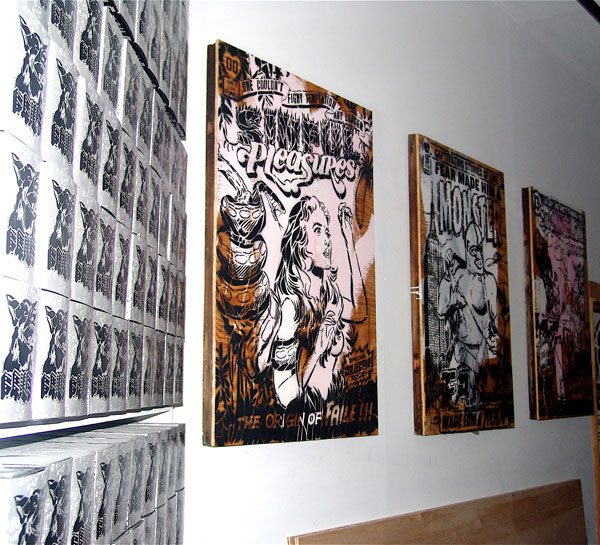
Patrick McNeil: No, dualism has always been an important part of our work. The rip is kinda the vehicle to get out the message. It's just a way to get with the composition going. The paintings are definitely from what we have learned and done on the street. You can't do all that shit without learning something from it. Working in the studio definitely creates its own thing but it just can't be as abstract as it is on the street. On the street you get that accidental collage type of things happening. Like when you put up a poster and it gets layered with all this other random stuff and a year later you just have some crazy composition going on. You can't plan that in the studio.You are definitely more conscious of what is going up on the canvas and how those images play off one another. The street brought that awareness in the way these things could happen accidentally and be a much more organic process.
Patrick Miller: I think that too, it is where that sort of narrative side comes in. There is the initial building of the image and then taking that image and figuring out how to use it or canvas it. Or do we break it down and take little sections and juxtapose it next to other elements until we make it a whole different meaning. For us that is something in the studio where we can take those bits and pieces and think about how this might work. Then as those build up it really just begins to take on a life of its own. What we see and the way we think about the meaning of the work is probably not going to be what the next person is thinking and seeing. This is one thing that I think is really nice about the work, that it's open to that kind of interpretation.
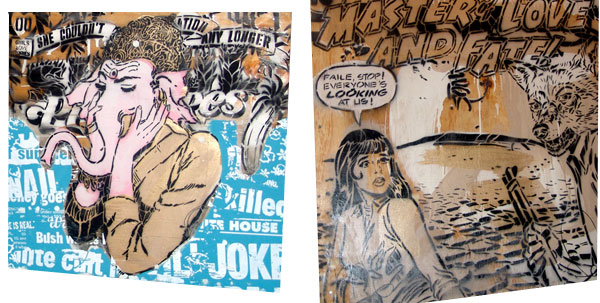
Patrick Miller: That is a good follow-up to what we were just saying. It is one of those things where it is really to each his own. That it is just one of those images that's best left as a mystery. It's always been something that we always turn back on people and say "what does it mean to you?" And on that we have heard a ton of different things. The best one being, there was this little boy walking by with his dad while we were shooting some of the sculptures and the young boy says "what is that little boy doing?" His dad responded, "I don't know." The boy then whispered in his dad's ear, "I think he's telling him a secret." For us that was a new one and there was just something so innocent about it, coming from such an honest place that made it really special. So again it's whatever you want it to be.
Patrick McNeil : Shepard Fairey, that was one of his initial influences with the Obey stuff. That was always something that I would notice just walking to work and just thinking this is really some obscure shit and when we were getting started we began experimenting with a bunch of different things. Back then I didn't know who the hell Shepard was but I wanted to let him know we were coming, so we made an image of "Bret the Hitman" with fists clenched. Then later we did some other wrestling masks and stuff and that was really Aiko. She was working with a friend of hers that was doing hi-fashion costume design. So Aiko printed a bunch of fabric and they collaborated and made these crazy wrestling masks. We had and idea to do a crazy wrestling exhibition but have yet to do it.
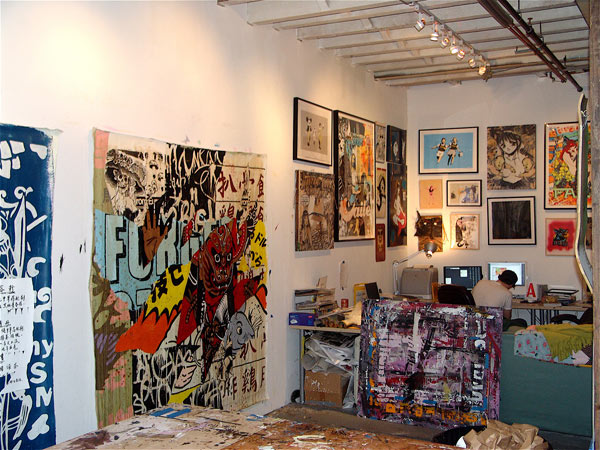
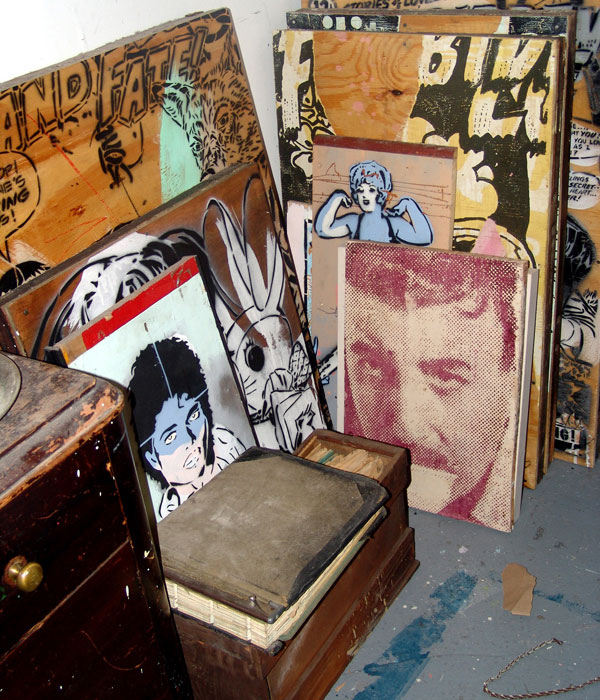
Patrick McNeil : Well, the only really collaboration pieces we've done on a big level were with Bast, David Ellis, and Swoon. Usually it is just everyone showing up with their tools and throwing down. The only one we really had a pre-collaborative effort on was the Burning House show in Los Angeles, with David Ellis and Swoon. We really just sat down in a meeting right here where we're sitting and just threw it out there. What's everyone doing? We all talked about it and conceptionally we really wanted to have it work as a collaboration as opposed to having it sectioned off with your shit here and our shit there.
Patrick Miller: It really just works the best when it's like jazz. Everyone just shows up with their instrument and begins to jam. You riff off one another and something kinda magical flows. This was really the height of working together in that way for us.
Patrick McNeil : Everything just fit. You could openly tell someone "that is not going to work" and there was no heartbreak or bullshit, everyone was on. If there was a comment then adjustments were made and sucked up and it was just on. It was the best collaboration ever! Another great collaboration was with Bast. He's really awesome to work with. But as far as pre-prep goes we usually all just show up and throw down.
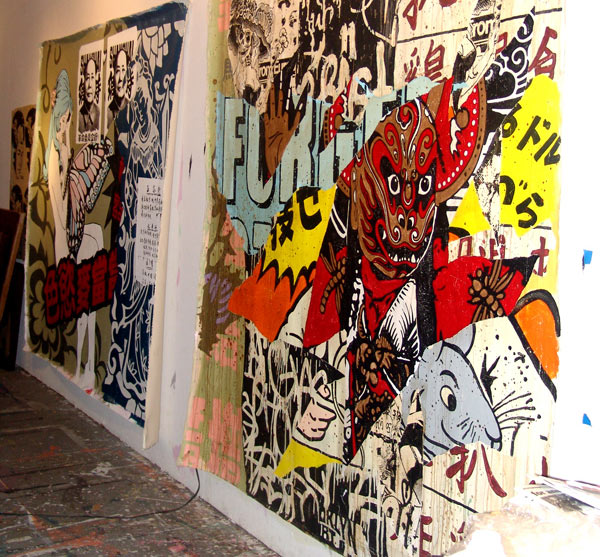
Patrick McNeil : There will be a show beginning Thursday, June 7th in Manhattan. Thursday, Friday, Saturday and Sunday... It will be a 4 day exhibit located in Manhattan at a location yet to be disclosed. We will announce the day of the opening here on Fecal Face and at www.faile.net, www.woostercollective.com and www.gothamist.com.
Patrick McNeil : Follow your passion!
Patrick Miller: Keep pushing, don't stop!
For more check, faile.net
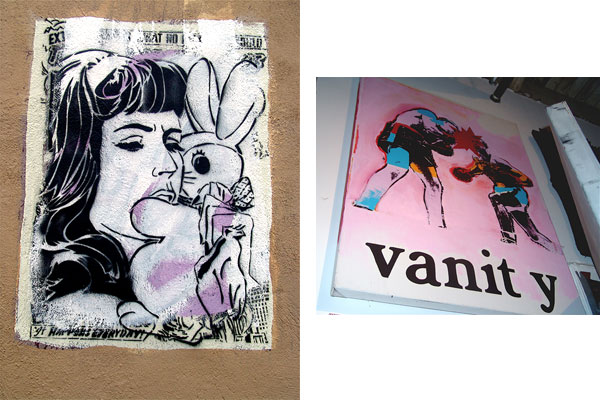
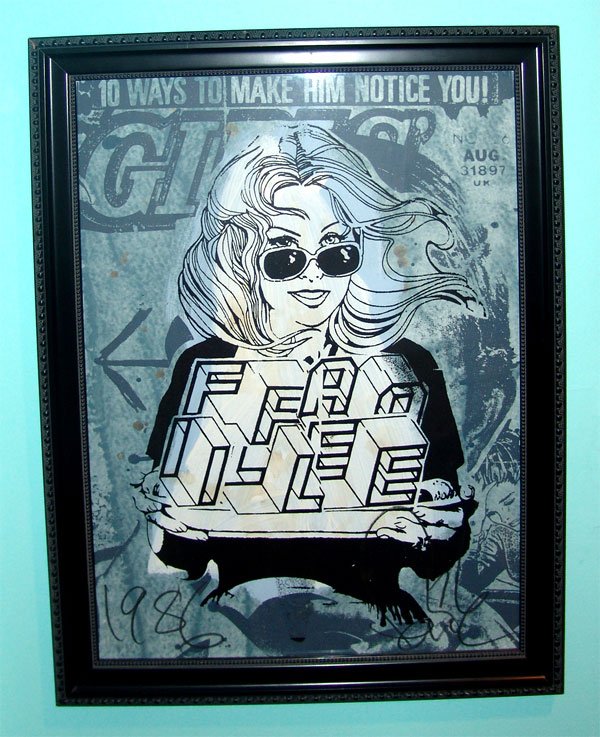
Interview conducted by our NYC correspondent, Manuel Bello.
{moscomment}
| < Prev | Next > |
|---|


